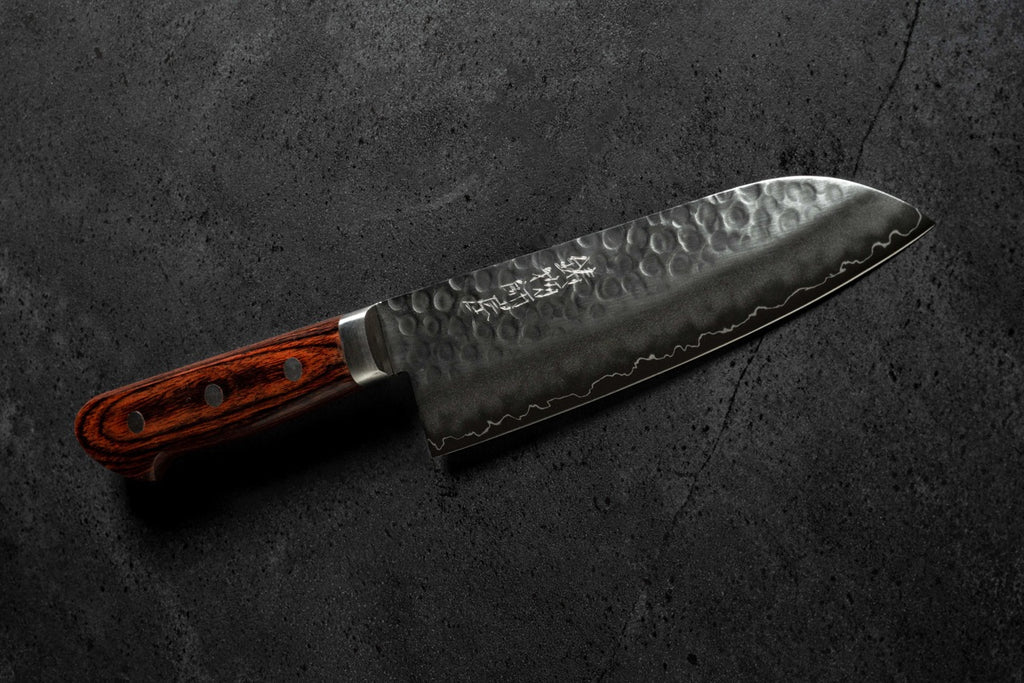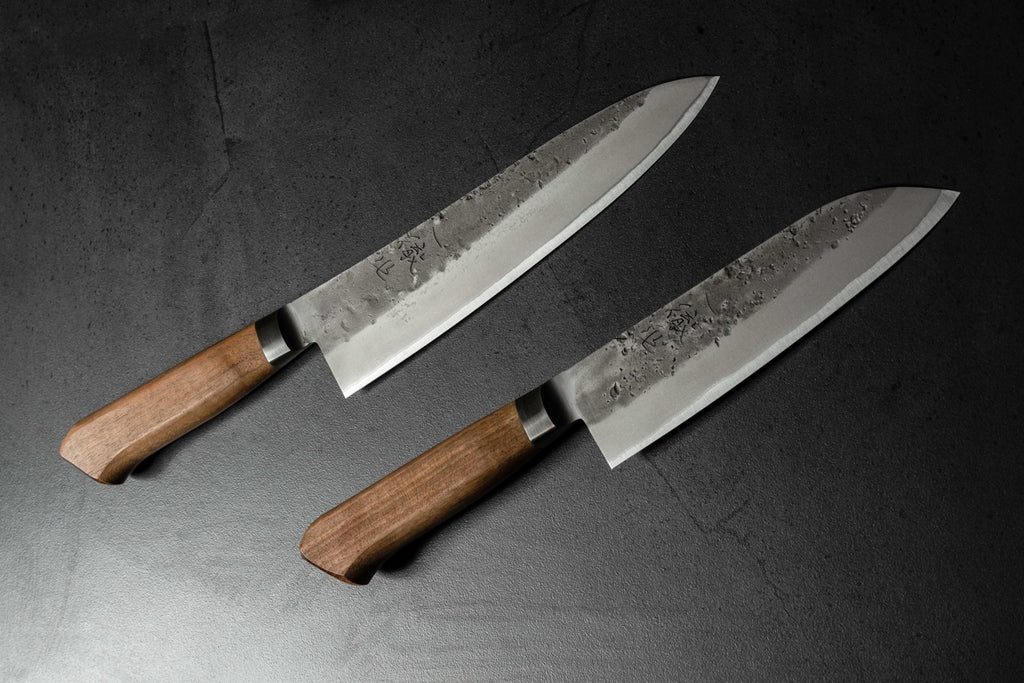Blog
What are the best Japanese knives?
Are you an avid cook? If the answer is yes, then you've probably already heard about the quality of Japanese knives! But is there a better knife than the others? Can we choose any Japanese knife?
Answer in this article.
Why choose a Japanese knife?
Known for their finesse and precision, it is only in the 80's that Japanese knives found their place in Western kitchens.
Whatever the dish you want to prepare, there is a Japanese knife made for you: you don't need to be a great chef to enjoy their benefits!

The Santoku knife: The traditional knife par excellence
Perfect for beginners, the Santoku is certainly one of the most versatile knives! Recognizable thanks to its characteristic shape, it allows you to slice, cut, chop with precision and delicacy vegetables, meat, fish... Its exceptional handling will allow you to make cutting movements in all directions (be careful however to avoid twisting movements), for a very precise result.
Discover our collection of Santoku knives.

The Gyuto knife: the Japanese version of the chef's knife
Here is the future star of your kitchen: the Gyuto, which is similar to the Western chef's knife. This carving knife is similar to the western chef's knife, but with a thinner and sharper blade. Perfect for cutting pieces of meat or fish, you can also do precision tasks like finely chopping herbs. The sophisticated plates are yours for the taking, worthy of the finest tables!
Discover our collection of Gyuto knives.

The Nakiri knife: for an exceptional julienne
You don't need a whole bunch of knives to cut vegetables or fruits, the Nakiri knife is the only one you really need! Recognized by its flat blade, you can slice thinly or practice the art of carving vegetables. It is also the knife you need to cut root vegetables or squash, which are sometimes difficult to slice with other types of knives. Even though it looks like a small cleaver, be careful not to use it to cut bones or hard foods.
Discover our collection of Nakiri knives.

The Yanagiba knife: wake up the sushi master in you
Who hasn't dreamed of becoming a true sushi master? With the right ingredients and a Yanagiba knife, it's (almost) within anyone's reach!
This knife has a long, thin, sharp blade that allows you to prepare sushi and sashimi in a single motion. It is also the perfect ally to slice fish with precision. For beginners, we recommend a blade of 270mm to 300mm for more room to maneuver.
Discover our collection of Yanagiba knives.

The Petty knife: to become an ace of precision
The Petty is definitely a knife that should be in every kitchen. Thanks to its small size, this knife is often a good idea to gently familiarize yourself with the world of Japanese knives. Also known as a paring knife, it is very useful for peeling, cutting, chiseling small foods. No matter what your recipes are, the Petty is sure to be useful in the preparation of your daily meals. It is surely the second best knife to get to start in the world of Japanese knives.
Discover our collection of Petty knives.
In short, there is a Japanese knife for all uses, you just have to choose the right one! The type of steel, the upkeep but also the weight are good criteria to take into consideration to find your ideal knife. For more information, read more on our FAQ.
Olivier's advice:
Choosing your first Japanese knife may indeed seem complicated. You just have to ask yourself some questions about your cooking habits. What kind of food do I cut, what kind of dishes do I cook on a regular basis? What kind of maintenance am I looking for? A stainless knife? The least amount of maintenance possible? Carbon steel, more durable and traditional? Each knife is unique just like us! Don't hesitate if you have any questions, our team of experts will be happy to help you
